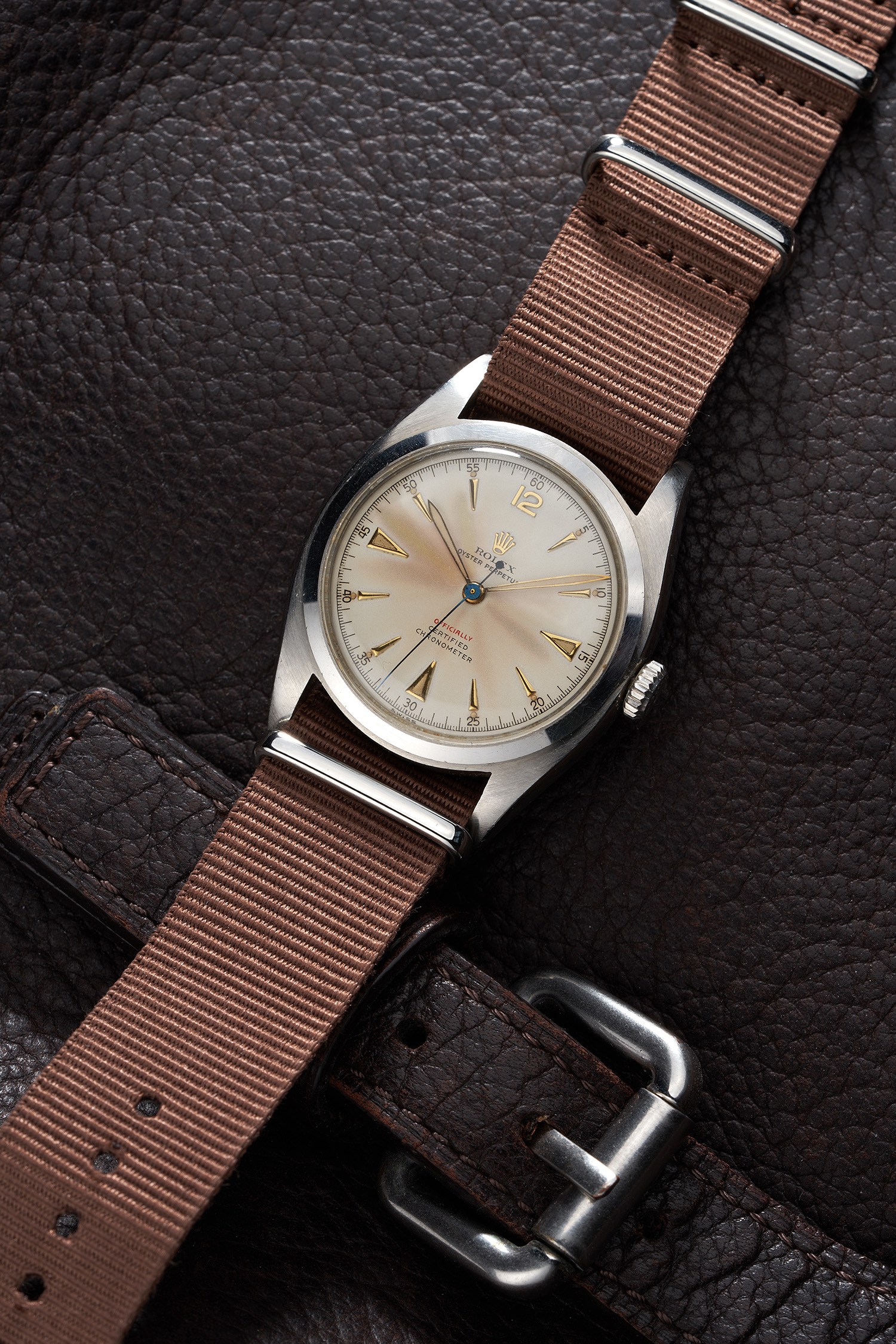







75
Rolex
Ref. 6098
Oyster Perpetual "Pre-Explorer - Everest Expedition"
A rare and historically important stainless steel wristwatch worn on Mount Everest by Norman Günther Dyhrenfurth
Full-Cataloguing
The reference 6098 is one of those rare timepieces which was part of “history in the making.” It was on May 29, 1953 that Sir Edmund Hillary and Tenzing Norgay successfully reached the top of Mount Everest with a steel Rolex reference 6098 on the wrist, setting the path for the first Rolex Explorer models to come.
The present reference 6098 in stainless steel is no ordinary watch. It was part of the second Swiss expedition to Mount Everest in Autumn 1952 strapped on the wrist of the Swiss-American mountaineer & film maker Norman Günter Dyhrenfurth (alongside Raymond Lambert, Lot 76). After reaching the South Col, the expedition was unfortunately forced to turn back due to extremely cold weather at the altitude of 8,100 metres. This would pave the way for the first British ascent the following year. As one of the main sponsors of the expedition, Rolex provided each mountaineer with a wristwatch such as the present one. It was not a gift, but rather a watch to wear during the expedition and return it to the manufacture for extensive testing upon their descent. Yet, this very watch most probably must have missed the call-back and to our biggest delight, remained in the hands of its wearer for a lifetime.
Given by Dyhrenfurth to the present owner in 2017, a few months before his passing, the watch remains in exceptional condition. The case and smooth bezel are made from one block of steel, characteristic of the reference 6098, and feature a Super Oyster Crown. Celebrating its seventieth birthday this year, the watch retains impressive strong proportions with thick lugs and a sharp engraving “B6” to the caseback. Not even one service mark is to be found in the inside caseback.
Interestingly, no serial number is present between the lugs and the spring bars are completely fixed, most probably to avoid the bracelet coming loose during the expedition. Furthermore a mystery prevails as B6 is engraved on the caseback. Could this be a prototype? A code for the expedition? An individual number?
Always engaged with exploration, scientific advancement, and the arts, it comes as no surprise that Rolex was adamant in having one of its watches on the summit of the world. Powered by the reliable automatic calibre 775, the reference 6098 necessitated a prominently domed caseback, today referred as “Ovettone” and was chronometer rated. This was a key aspect for Rolex which was keen to see the test results upon the return of the expedition. The reference 6098 could thus be a prototype of what would ultimately become the Explorer.
The dial features a closed minute track, applied arrow hour markers, and applied Rolex coronet at 12 o’clock. Exulting a vintage je-ne-sais-quoi, the dagger hour markers, triangular indexes inlayed with radium and the lume plots have developed a warm creamy patina and remain perfectly plump and intact. Yet, what immediately draws one’s attention is the beautifully aged “sun ray flower” patina that developed on the dial over the years following the movement of the leaf shaped hands resting at different position. This further indicates that the watch was seldom used throughout its entire life.
Such well-preserved examples hardly appear on the market, no less a prototype that went all the way to Himalayas and ascended Mount Everest. Being treasured over the past seventy years, it is a magnificent trophy watch for the most discerning connoisseur.
Rolex
Swiss | 1905Founded in 1905 England by Hans Wilsdorf and Alfred Davis as Wilsdorf & Davis, it soon became known as the Rolex Watch Company in 1915, moving its headquarters to Geneva in 1919. Like no other company, the success of the wristwatch can be attributed to many of Rolex's innovations that made them one of the most respected and well-known of all luxury brands. These innovations include their famous "Oyster" case — the world's first water resistant and dustproof watch case, invented in 1926 — and their "Perpetual" — the first reliable self-winding movement for wristwatches launched in 1933. They would form the foundation for Rolex's Datejust and Day-Date, respectively introduced in 1945 and 1956, but also importantly for their sports watches, such as the Explorer, Submariner and GMT-Master launched in the mid-1950s.
One of its most famous models is the Cosmograph Daytona. Launched in 1963, these chronographs are without any doubt amongst the most iconic and coveted of all collectible wristwatches. Other key collectible models include their most complicated vintage watches, including references 8171 and 6062 with triple calendar and moon phase, "Jean Claude Killy" triple date chronograph models and the Submariner, including early "big-crown" models and military-issued variants.